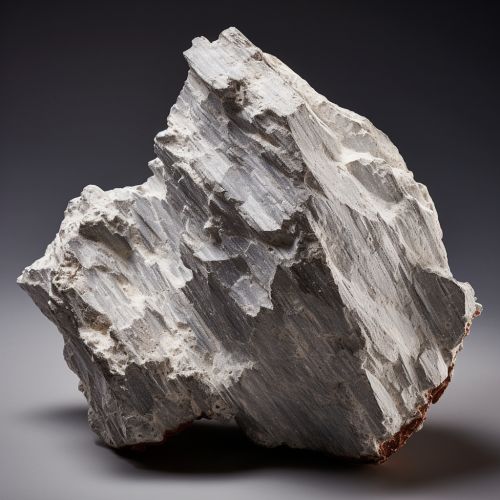Anorthosite
Introduction
Anorthosite is a type of igneous rock primarily composed of plagioclase feldspar, with lesser amounts of pyroxene and olivine. It is characterized by a coarse-grained texture and a light color, typically white or grey. Anorthosites are found in various locations around the world and have been significant in the study of the Earth's crust and the geology of the Moon.
Formation
Anorthosites are formed through the process of crystallization of molten rock, or magma, in the Earth's crust. The magma cools slowly, allowing large crystals of plagioclase feldspar to form. This process is known as fractional crystallization, where different minerals crystallize out of the magma at different temperatures. The remaining magma, depleted in plagioclase, can then crystallize into other rock types.


Occurrence
Anorthosites are found in various locations around the world, including the Adirondack Mountains in New York, the Rogaland area of Norway, and the Bushveld Igneous Complex in South Africa. They are also found in large quantities on the Moon, and lunar anorthosites have been brought back to Earth by the Apollo lunar missions. These lunar samples have provided valuable insights into the Moon's geological history.
Characteristics
Anorthosites are characterized by their coarse-grained texture and light color, typically white or grey. The primary mineral in anorthosite is plagioclase feldspar, which makes up more than 90% of the rock. Lesser amounts of pyroxene and olivine are also present. The high concentration of plagioclase gives anorthosite its characteristic light color, as plagioclase is typically white or light grey. The coarse-grained texture of anorthosite is a result of the slow cooling of the magma from which it forms, which allows large crystals to develop.
Economic Importance
Anorthosites have economic importance as a source of aluminum. The plagioclase in anorthosite contains a significant amount of aluminum, and anorthosite deposits can be mined for this metal. In addition, anorthosites are sometimes used as decorative stone due to their attractive light color and coarse-grained texture.
Geological Significance
Anorthosites are significant in the study of the Earth's crust. They are thought to represent the original crust of the Earth, formed through the process of fractional crystallization of magma. The presence of anorthosites in various locations around the world provides evidence for this process. In addition, the study of lunar anorthosites has provided valuable insights into the geological history of the Moon.
